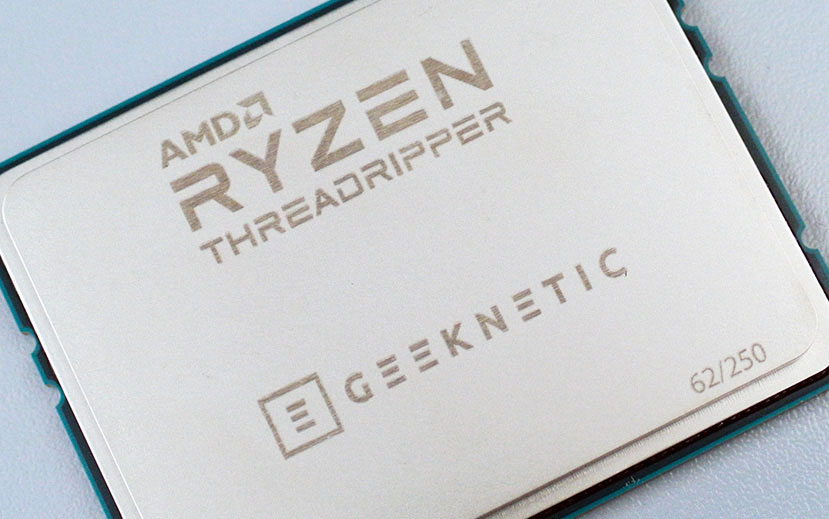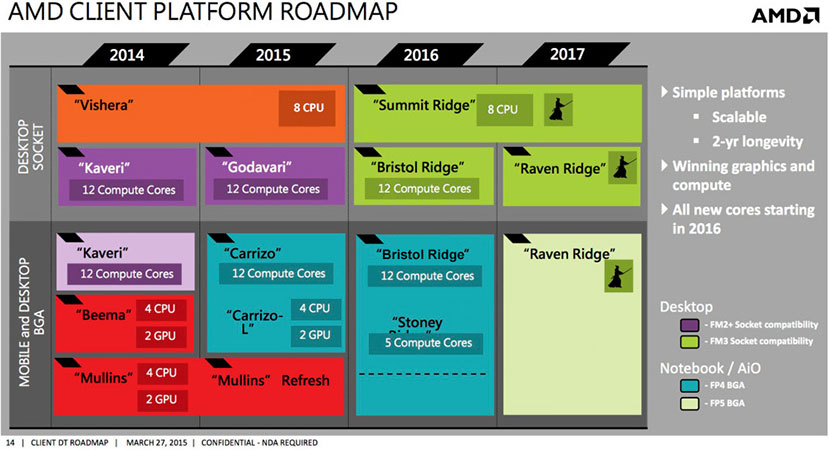This is not a story about big resources and budgets to develop a glorious product. This is the story of a group of CPU enthusiasts made up of semiconductor engineers and marketing people from AMD who started a secret personal adventure that would end up being what we know today as AMD Threadripper.

It all started in 2014. At that moment, AMD was in serious trouble since the latest Intel‘s CPU platforms were light years away from AMD’s in terms of performance, and sales were disappointing. The same thing happened with APUs, which were AMD’s big bet for years and where Intel was and still is a tough rival.
To the public, the brand was focused on what it had been most successful at in recent years: GPUs with its Hawaii architecture (RX 200 Series) and its Jaguar architecture that would power the most important consoles on the market, including Sony’s PS4 and Microsoft’s XBOX One.
Meanwhile, many of AMD’s CPU architects worked internally on what would be their next platform, which would put the green-colored processors brand back into the rightful place that it once had with the Athlon processors. We are talking about the Zen architecture.
The initial plan with the Zen architecture
In 2014, AMD was already aware of the Zen architecture’s capabilities. The brand had done a magnificent engineering job building the architecture, besides having the 14 nm process that its manufacturing partner, GlobalFoundries, was already capable of creating. All of this allowed AMD to take a great leap that would increase performance per core by over 40% in contrast to the previous architecture.
This boost in performance would allow it to finally come close to Intel and have a competitive product at a reasonable price to gain market share and earn good revenue. This would be the light at the end of the tunnel that would allow AMD to end the bad streak that it had for years.
In 2015, the roadmap and product specifications were available at all times, however the business plan revolved around these products:
- Ryzen 3, 5 and 7 processors with 4, 6 and up to 8 cores.
- The EPYC-server processors with 8, 16, 24 and 32 cores.
AMD enthusiasts
When you are a technology and processor enthusiast and you land on a manufacturer like AMD, sometimes you are lucky enough to influence decisions that can end up turning into something big and important for enthusiasts themselves, for the company and for customers, of course. This is James Prior’s case with Threadripper:

James, just like many other technology enthusiasts, landed a job as a technical writer on a technology website called Rage3D.com until he was signed by AMD in 2013 alongside journalists from technology journals to join the AMD team.
James Prior started in the communications department, dealing with press relations, and two years later, in early 2015, he was promoted to Product Manager.
Developing the Threadripper idea
In 2015, as the first piece of information on the projected performance of the Zen architecture arrived, James Prior and some others realized that there was a very big gap between Ryzen and EPYC, not only in the number of cores, but also in the number of PCI Express lanes and memory bandwidth.
For an enthusiast such as James, a flagship bringing the features of EPYC-server processors to home and professional environments was missing, however AMD’s business plan did not contemplate it. It was at that moment that James and a group of AMD’s employees made up of engineers, marketers, sales people and others started exploring the idea of such a product.
As the company went about developing its other Zen-based products, Threadripper’s development continued in the shadows with many calls, Skype messages outside of work and many sleepless nights both monitoring the progress made in Ryzen and EPYC, and studying which one could be used for Threadripper.
One of the keys was given by AMD’s Infinity Fabric. This technology, which is the successor to the famous HyperTransport, is responsible for connecting every processor die to each other, to the PCIe lanes and to the memory as well. In the case of EPYC, it is also responsible for connecting different processors’ sockets.
This group of bold enthusiasts working at AMD realized that they could use the Infinity Fabric technology, still in development at that time, to join two Ryzen processors as one. In this way the development of the product would be a lot less complex and the team could be able to launch a product that was far superior to Ryzen in relatively little time.
James Prior and the rest of the people at AMD involved in the project continued to work on Threadripper in the shadows, outside of AMD’s official business plan. In fact, by being something that was kept off of AMD’s roadmap and that this group of enthusiasts was developing in their spare time, few people in AMD knew it.
Threadripper’s crowning
Much to the surprise of many, Jim Anderson, who left Intel to join AMD as General Manager and Vice President of the Computing and Graphics Business Group, also turned out to be a CPU enthusiast. For a person with decision-making power in AMD like Jim Anderson to also turn out to be a CPU enthusiast was key for Threadripper.

In June 2016 and on the way to the Computex expo, Jim shared a taxi with Travis Kirsch, Director of Product Management and the boss of James Prior and much of the team that had developed the Threadripper project in the shadows. Travis Kirsch spoke to Jim about the project for the first time in that moment and Jim loved it.
Shortly after that, the team that was working on Threadripper in the shadows so far showed Jim the project in detail. He was surprised and excited about what they could achieve with Threadripper and the fact that they could really create it, launch it and carry it out without undermining the development of Ryzen or EPYC. Such was his enthusiasm that he not only put Threadripper in the company’s business plan, but also decided to shorten the estimated launch time by a year in order to unveil these processors during the summer of 2017.
And it happened. On July 29, 2017, I was summoned by AMD to attend Threadripper’s launch event in Los Angeles to see it for myself, while still under a confidentiality agreement at that time, how AMD was finally able to give us a product that outshined the best Intel processor in terms of performance and even at a more competitive price.
Interestingly, a few months ago I published an article explaining why the sales of AMD Ryzen did not take off despite the fact that most of the press praised it and despite offering a good performance at that price. In that same article I came to the conclusion that AMD needed a better flagship that surpassed the best that Intel had to offer in order to regain market confidence and have a better branding and sales impact.
No sooner said than done, AMD launched Threadripper in August and a few weeks later we know through this article that AMD has already outperformed Intel in terms of sales in one of the most important online computer stores in Germany.
Would this have been possible without the effort that enthusiasts like James Prior took outside of their working hours? Answering this question is not easy. I want to think that AMD’s management would realize the need for something like Threadripper at some point. However, I think that they would not have dethroned Intel in time if it were not for the great effort of a group of enthusiasts, including James Prior, and for another enthusiast like Jim Anderson who was at the helm to take the important decision of putting Threadripper in AMD’s official plan and carry out what was necessary for its development to introduce it on the market in the right moment.
